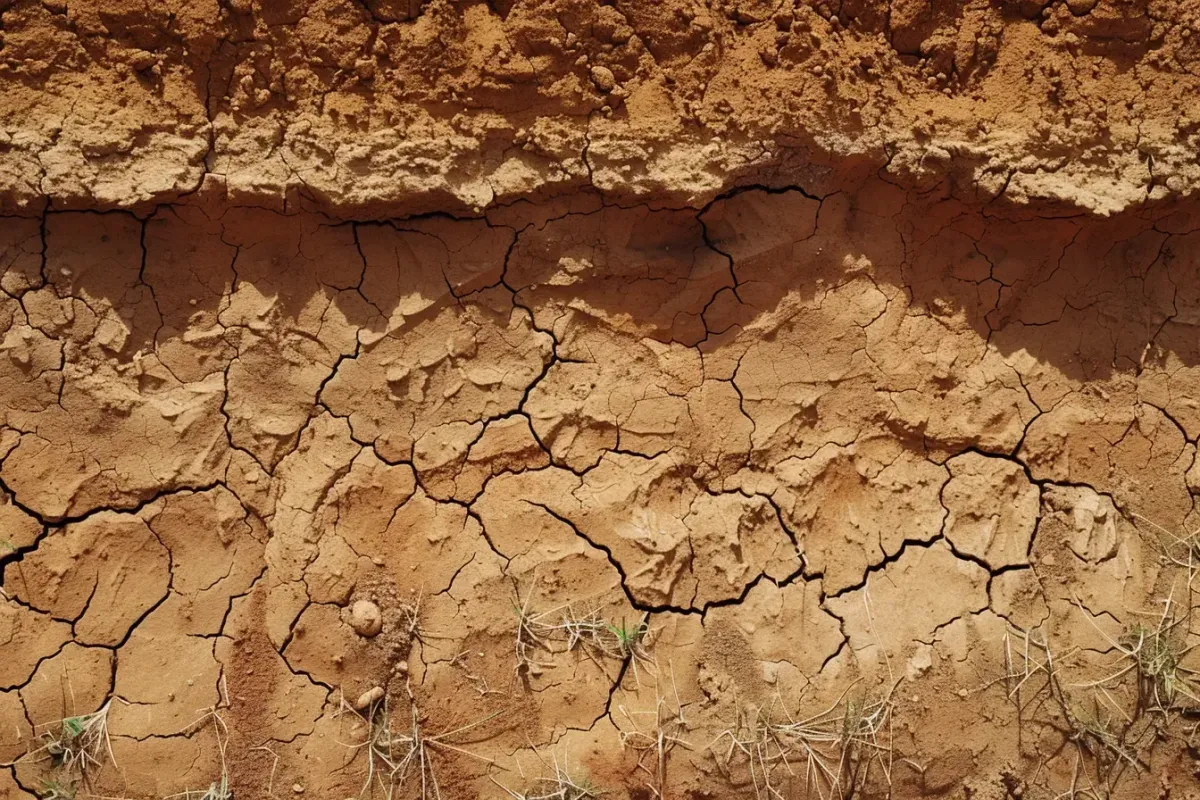By calling this number, you consent to receive a follow-up text message from Erosion Control Direct if the call is missed
By calling this number, you consent to receive a follow-up text message from Erosion Control Direct if the call is missed
The Erosion Control Direct Blog
Where Expertise Meets Innovation in Erosion Management
The Erosion Control Direct Blog
Where Expertise Meets Innovation in Erosion Management
Featured Insights
From the Experts: Navigating the Landscape of Erosion Control

The Science of Preventing Soil Erosion: How Erosion Control Solutions Work
Soil erosion is a natural process that can have devastating effects on landscapes, ecosystems, and human infrastructure. As the global population grows and climate change intensifies, the need for effective erosion control products has never been more critical. Understanding the science behind soil erosion and the various solutions available is essential for anyone involved in land management, construction, or environmental conservation. This article delves into the intricate mechanisms of soil erosion and explores how different erosion control solutions work to mitigate its impacts.
Understanding Soil Erosion
Soil erosion is the process by which soil particles are detached and transported from their original location by wind, water, or other natural forces. While erosion is a natural geological process, human activities have significantly accelerated its rate, leading to numerous environmental and economic challenges.
Types of Soil Erosion
Water Erosion
Sheet erosion
Rill erosion
Gully erosion
Stream bank erosion
Wind Erosion
Saltation
Suspension
Surface creep
Glacial Erosion
Tillage Erosion
Factors Influencing Soil Erosion
Several factors contribute to the severity and rate of soil erosion:
Rainfall intensity and duration
Soil type and structure
Slope gradient and length
Vegetation cover
Land use practices
Climate conditions
Understanding these factors is crucial for developing effective erosion control strategies.
The Science Behind Erosion Control Solutions
Erosion control solutions work by addressing one or more of the following principles:
Reducing the impact of erosive forces
Increasing soil resistance to erosion
Slowing the movement of water or wind across the soil surface
Trapping and retaining eroded soil particles
Let’s explore how different eco-friendly erosion control solutions apply these principles to prevent soil loss.
Vegetation-Based Solutions
Vegetation plays a crucial role in preventing soil erosion. Plants protect the soil surface, increase infiltration, and improve soil structure through their root systems.
How it works:
Plant canopies intercept raindrops, reducing their erosive impact
Roots bind soil particles together, increasing soil cohesion
Plant litter on the soil surface slows runoff and increases water infiltration
Transpiration reduces soil moisture, making the soil less susceptible to erosion
Examples:
Cover crops
Grass buffer strips
Riparian vegetation
Mulching and Erosion Control Blankets
Mulches and erosion control blankets provide a protective layer over the soil surface, shielding it from the impact of rain and wind.
How it works:
Absorbs the energy of falling raindrops
Reduces surface runoff velocity
Increases water infiltration
Maintains soil moisture and temperature
Examples:
Straw mulch
Wood chips
Coconut fiber (coir) blankets
Synthetic erosion control mats
Geotextiles and Geosynthetics
Geotextiles and geosynthetics are engineered materials designed to stabilize soil and control erosion in various applications.
How it works:
Provides soil reinforcement
Separates soil layers
Filters and drains excess water
Protects underlying soil from erosive forces
Examples:
Woven and non-woven geotextiles
Geogrids
Cellular confinement systems
Hydraulic Erosion Control Products
Hydraulic erosion control products (HECPs) are liquid formulations that are sprayed onto the soil surface to create a protective layer.
How it works:
Forms a temporary, porous crust on the soil surface
Binds soil particles together
Allows water infiltration while reducing runoff
Promotes vegetation establishment
Examples:
Hydromulch
Bonded fiber matrix (BFM)
Flexible growth medium (FGM)
Structural Erosion Control Measures
Structural measures are engineered solutions designed to control erosion in high-risk areas or where other methods may be insufficient.
How it works:
Redirects or slows water flow
Stabilizes slopes and embankments
Traps sediment
Examples:
Retaining walls
Gabions
Check dams
Sediment basins
Choosing the Right Erosion Control Solution
Selecting the most appropriate erosion control method depends on various factors, including:
Site characteristics (soil type, slope, climate)
Project requirements (temporary vs. permanent solutions)
Environmental considerations
Budget constraints
Regulatory compliance
It’s often beneficial to combine multiple erosion control techniques for optimal results. For instance, using vegetation in conjunction with erosion control blankets can provide both immediate and long-term protection.
Case Studies: Erosion Control in Action
Case Study 1: Highway Embankment Stabilization
Challenge: A steep highway embankment was experiencing severe erosion, threatening the integrity of the road.
Solution: A combination of roadside erosion control measures was implemented, including:
Hydroseeding with native grass species
Installation of erosion control blankets
Construction of terraces and check dams
Result: After one year, the embankment showed significant stabilization, with 90% vegetation coverage and no signs of active erosion.
Case Study 2: Construction Site Sediment Control
Challenge: A large construction site needed to comply with strict sediment control regulations to protect nearby water bodies.
Solution: A comprehensive erosion and sediment control plan was developed, featuring:
Perimeter silt fences
Temporary sediment basins
Hydromulching of exposed soil areas
Regular inspections and maintenance
Result: The site maintained compliance throughout the construction period, with minimal sediment discharge and no regulatory violations.
Emerging Technologies in Erosion Control
The field of erosion control is constantly evolving, with new technologies and approaches being developed to address complex erosion challenges. Some emerging trends include:
Bioengineering techniques that combine living plants with structural elements
Smart erosion control systems with real-time monitoring and adaptive responses
Nanotechnology-enhanced materials for improved erosion resistance
Sustainable and biodegradable erosion control products
The Future of Erosion Control
As climate change continues to impact weather patterns and increase the frequency of extreme events, the importance of effective erosion control will only grow. Future solutions will likely focus on:
Resilience to extreme weather events
Integration with natural ecosystems
Multifunctional designs that provide additional benefits beyond erosion control
Adaptive management strategies that can respond to changing conditions
Q&A: Common Questions About Erosion Control
Q: What is the most effective method for controlling soil erosion?
A: The most effective method varies depending on site conditions, but a combination of vegetation establishment and structural measures often provides the best results.Q: How does climate change affect soil erosion?
A: Climate change can increase erosion rates through more frequent and intense rainfall events, changes in vegetation patterns, and altered freeze-thaw cycles.Q: Can erosion control measures improve water quality?
A: Yes, by reducing sediment runoff, erosion control measures can significantly improve water quality in nearby streams and water bodies.Q: How long do erosion control blankets last?
A: The lifespan of erosion control blankets varies from 3 months to 3 years, depending on the material and environmental conditions.Q: Are there any natural methods for controlling erosion?
A: Yes, natural methods include vegetation establishment, mulching with organic materials, and bioengineering techniques that use living plants.Q: How does soil type affect erosion control strategies?
A: Soil type influences water infiltration rates, cohesion, and erodibility, which in turn affect the choice of erosion control methods.Q: What role does vegetation play in erosion control?
A: Vegetation protects the soil surface, increases infiltration, improves soil structure, and provides long-term stability through root systems.Q: How can erosion be prevented on steep slopes?
A: Steep slopes often require a combination of methods, such as terracing, erosion control blankets, and specialized vegetation.Q: What are the environmental benefits of erosion control?
A: Erosion control helps preserve soil resources, protect water quality, maintain biodiversity, and reduce sedimentation in water bodies.Q: How do erosion control measures affect construction costs?
A: While erosion control measures add upfront costs, they can significantly reduce long-term expenses related to site maintenance, repairs, and regulatory compliance.
Get Expert Erosion Control Solutions
Implementing the right erosion control solutions is crucial for protecting your property and the environment. At Erosion Control Direct, we’re committed to providing you with top-quality products and expert advice to address your specific erosion control needs. For personalized assistance and product recommendations, don’t hesitate to reach out:
• Call us at (888) 920-5005 to speak with one of our erosion control experts.
• Visit our website at https://erosioncontroldirect.com to browse our product range or submit an online inquiry.
• For detailed quotations, email us at [email protected].
Let us help you find the perfect erosion control solution for your project. Contact Erosion Control Direct today and take the first step towards effective soil stabilization and environmental protection.

The Science of Preventing Soil Erosion: How Erosion Control Solutions Work
Soil erosion is a natural process that can have devastating effects on landscapes, ecosystems, and human infrastructure. As the global population grows and climate change intensifies, the need for effective erosion control products has never been more critical. Understanding the science behind soil erosion and the various solutions available is essential for anyone involved in land management, construction, or environmental conservation. This article delves into the intricate mechanisms of soil erosion and explores how different erosion control solutions work to mitigate its impacts.
Understanding Soil Erosion
Soil erosion is the process by which soil particles are detached and transported from their original location by wind, water, or other natural forces. While erosion is a natural geological process, human activities have significantly accelerated its rate, leading to numerous environmental and economic challenges.
Types of Soil Erosion
Water Erosion
Sheet erosion
Rill erosion
Gully erosion
Stream bank erosion
Wind Erosion
Saltation
Suspension
Surface creep
Glacial Erosion
Tillage Erosion
Factors Influencing Soil Erosion
Several factors contribute to the severity and rate of soil erosion:
Rainfall intensity and duration
Soil type and structure
Slope gradient and length
Vegetation cover
Land use practices
Climate conditions
Understanding these factors is crucial for developing effective erosion control strategies.
The Science Behind Erosion Control Solutions
Erosion control solutions work by addressing one or more of the following principles:
Reducing the impact of erosive forces
Increasing soil resistance to erosion
Slowing the movement of water or wind across the soil surface
Trapping and retaining eroded soil particles
Let’s explore how different eco-friendly erosion control solutions apply these principles to prevent soil loss.
Vegetation-Based Solutions
Vegetation plays a crucial role in preventing soil erosion. Plants protect the soil surface, increase infiltration, and improve soil structure through their root systems.
How it works:
Plant canopies intercept raindrops, reducing their erosive impact
Roots bind soil particles together, increasing soil cohesion
Plant litter on the soil surface slows runoff and increases water infiltration
Transpiration reduces soil moisture, making the soil less susceptible to erosion
Examples:
Cover crops
Grass buffer strips
Riparian vegetation
Mulching and Erosion Control Blankets
Mulches and erosion control blankets provide a protective layer over the soil surface, shielding it from the impact of rain and wind.
How it works:
Absorbs the energy of falling raindrops
Reduces surface runoff velocity
Increases water infiltration
Maintains soil moisture and temperature
Examples:
Straw mulch
Wood chips
Coconut fiber (coir) blankets
Synthetic erosion control mats
Geotextiles and Geosynthetics
Geotextiles and geosynthetics are engineered materials designed to stabilize soil and control erosion in various applications.
How it works:
Provides soil reinforcement
Separates soil layers
Filters and drains excess water
Protects underlying soil from erosive forces
Examples:
Woven and non-woven geotextiles
Geogrids
Cellular confinement systems
Hydraulic Erosion Control Products
Hydraulic erosion control products (HECPs) are liquid formulations that are sprayed onto the soil surface to create a protective layer.
How it works:
Forms a temporary, porous crust on the soil surface
Binds soil particles together
Allows water infiltration while reducing runoff
Promotes vegetation establishment
Examples:
Hydromulch
Bonded fiber matrix (BFM)
Flexible growth medium (FGM)
Structural Erosion Control Measures
Structural measures are engineered solutions designed to control erosion in high-risk areas or where other methods may be insufficient.
How it works:
Redirects or slows water flow
Stabilizes slopes and embankments
Traps sediment
Examples:
Retaining walls
Gabions
Check dams
Sediment basins
Choosing the Right Erosion Control Solution
Selecting the most appropriate erosion control method depends on various factors, including:
Site characteristics (soil type, slope, climate)
Project requirements (temporary vs. permanent solutions)
Environmental considerations
Budget constraints
Regulatory compliance
It’s often beneficial to combine multiple erosion control techniques for optimal results. For instance, using vegetation in conjunction with erosion control blankets can provide both immediate and long-term protection.
Case Studies: Erosion Control in Action
Case Study 1: Highway Embankment Stabilization
Challenge: A steep highway embankment was experiencing severe erosion, threatening the integrity of the road.
Solution: A combination of roadside erosion control measures was implemented, including:
Hydroseeding with native grass species
Installation of erosion control blankets
Construction of terraces and check dams
Result: After one year, the embankment showed significant stabilization, with 90% vegetation coverage and no signs of active erosion.
Case Study 2: Construction Site Sediment Control
Challenge: A large construction site needed to comply with strict sediment control regulations to protect nearby water bodies.
Solution: A comprehensive erosion and sediment control plan was developed, featuring:
Perimeter silt fences
Temporary sediment basins
Hydromulching of exposed soil areas
Regular inspections and maintenance
Result: The site maintained compliance throughout the construction period, with minimal sediment discharge and no regulatory violations.
Emerging Technologies in Erosion Control
The field of erosion control is constantly evolving, with new technologies and approaches being developed to address complex erosion challenges. Some emerging trends include:
Bioengineering techniques that combine living plants with structural elements
Smart erosion control systems with real-time monitoring and adaptive responses
Nanotechnology-enhanced materials for improved erosion resistance
Sustainable and biodegradable erosion control products
The Future of Erosion Control
As climate change continues to impact weather patterns and increase the frequency of extreme events, the importance of effective erosion control will only grow. Future solutions will likely focus on:
Resilience to extreme weather events
Integration with natural ecosystems
Multifunctional designs that provide additional benefits beyond erosion control
Adaptive management strategies that can respond to changing conditions
Q&A: Common Questions About Erosion Control
Q: What is the most effective method for controlling soil erosion?
A: The most effective method varies depending on site conditions, but a combination of vegetation establishment and structural measures often provides the best results.Q: How does climate change affect soil erosion?
A: Climate change can increase erosion rates through more frequent and intense rainfall events, changes in vegetation patterns, and altered freeze-thaw cycles.Q: Can erosion control measures improve water quality?
A: Yes, by reducing sediment runoff, erosion control measures can significantly improve water quality in nearby streams and water bodies.Q: How long do erosion control blankets last?
A: The lifespan of erosion control blankets varies from 3 months to 3 years, depending on the material and environmental conditions.Q: Are there any natural methods for controlling erosion?
A: Yes, natural methods include vegetation establishment, mulching with organic materials, and bioengineering techniques that use living plants.Q: How does soil type affect erosion control strategies?
A: Soil type influences water infiltration rates, cohesion, and erodibility, which in turn affect the choice of erosion control methods.Q: What role does vegetation play in erosion control?
A: Vegetation protects the soil surface, increases infiltration, improves soil structure, and provides long-term stability through root systems.Q: How can erosion be prevented on steep slopes?
A: Steep slopes often require a combination of methods, such as terracing, erosion control blankets, and specialized vegetation.Q: What are the environmental benefits of erosion control?
A: Erosion control helps preserve soil resources, protect water quality, maintain biodiversity, and reduce sedimentation in water bodies.Q: How do erosion control measures affect construction costs?
A: While erosion control measures add upfront costs, they can significantly reduce long-term expenses related to site maintenance, repairs, and regulatory compliance.
Get Expert Erosion Control Solutions
Implementing the right erosion control solutions is crucial for protecting your property and the environment. At Erosion Control Direct, we’re committed to providing you with top-quality products and expert advice to address your specific erosion control needs. For personalized assistance and product recommendations, don’t hesitate to reach out:
• Call us at (888) 920-5005 to speak with one of our erosion control experts.
• Visit our website at https://erosioncontroldirect.com to browse our product range or submit an online inquiry.
• For detailed quotations, email us at [email protected].
Let us help you find the perfect erosion control solution for your project. Contact Erosion Control Direct today and take the first step towards effective soil stabilization and environmental protection.


Facebook